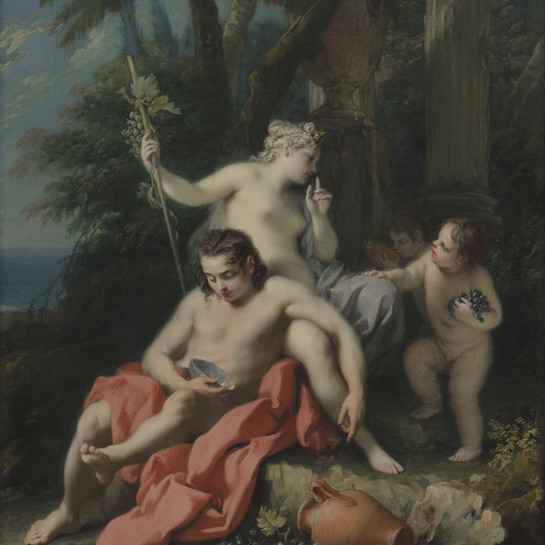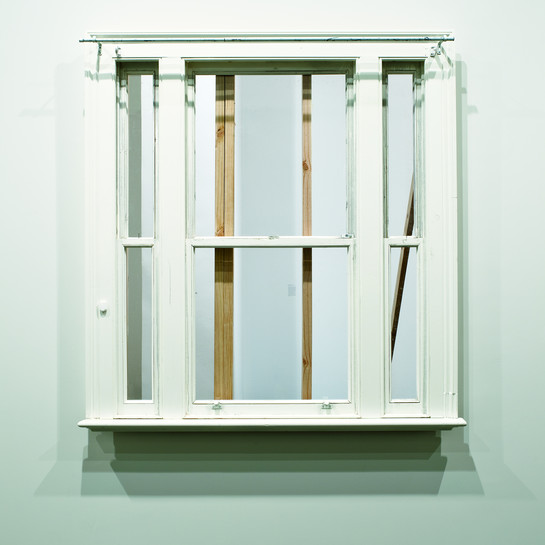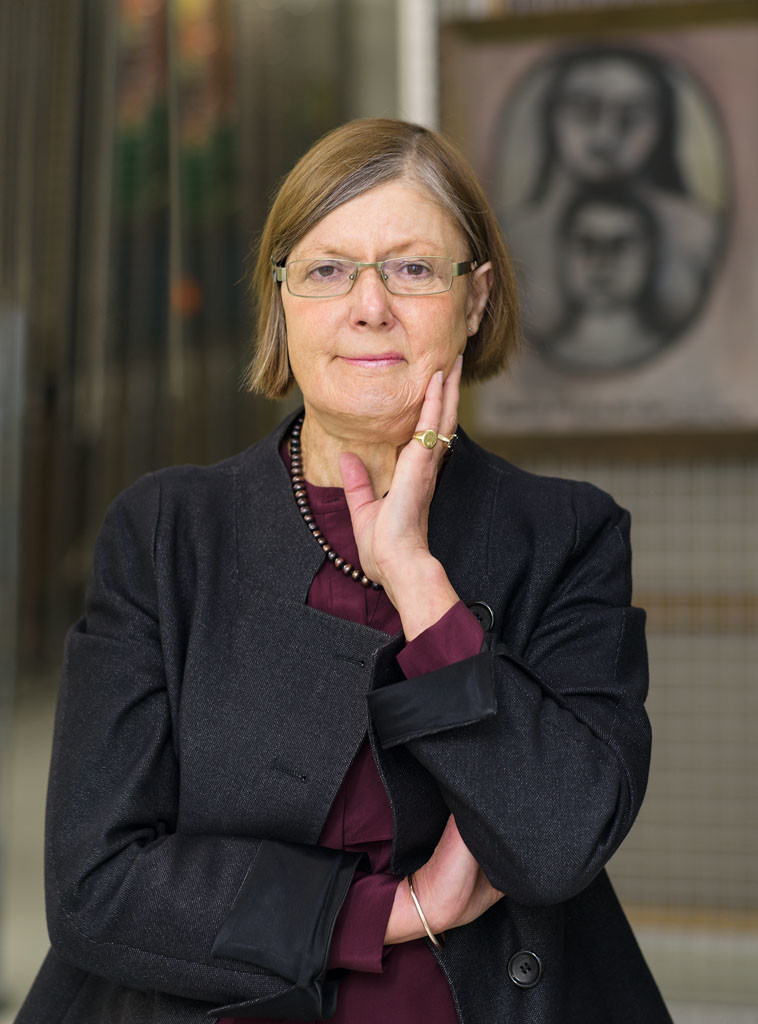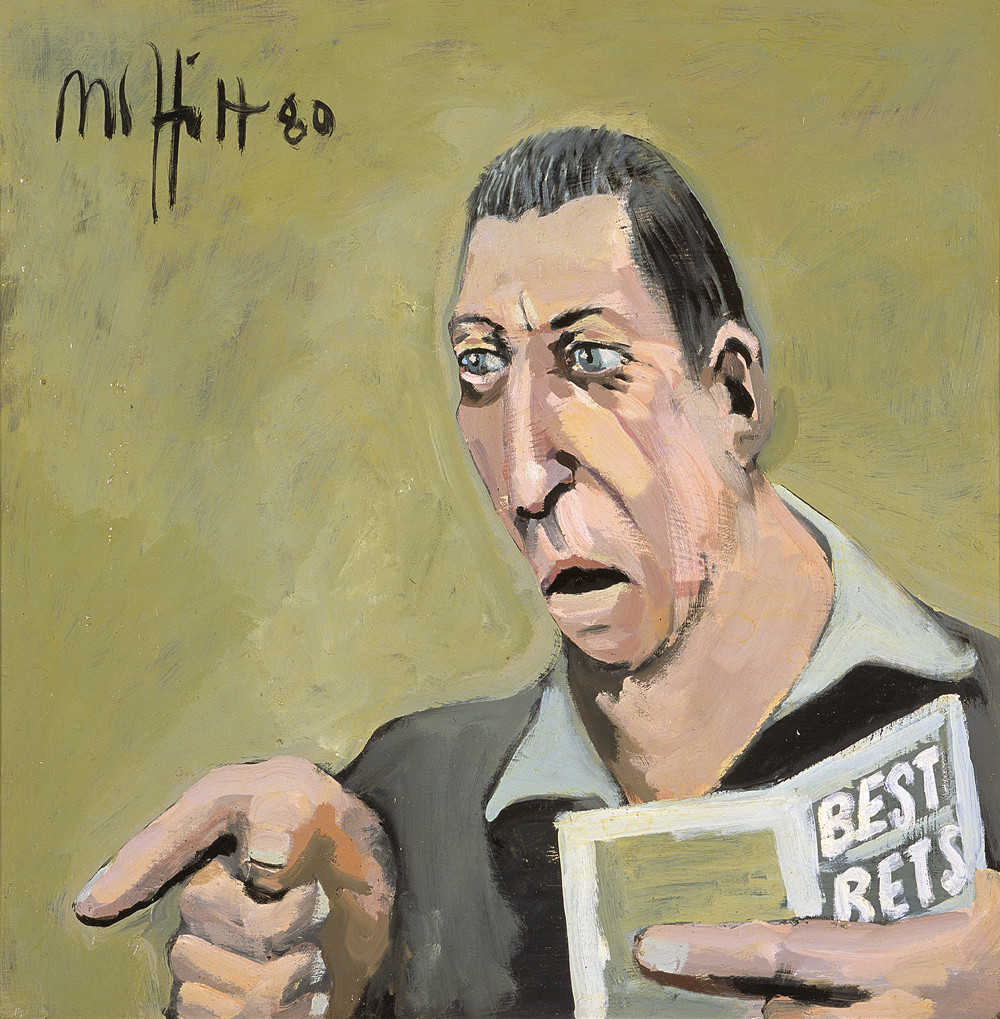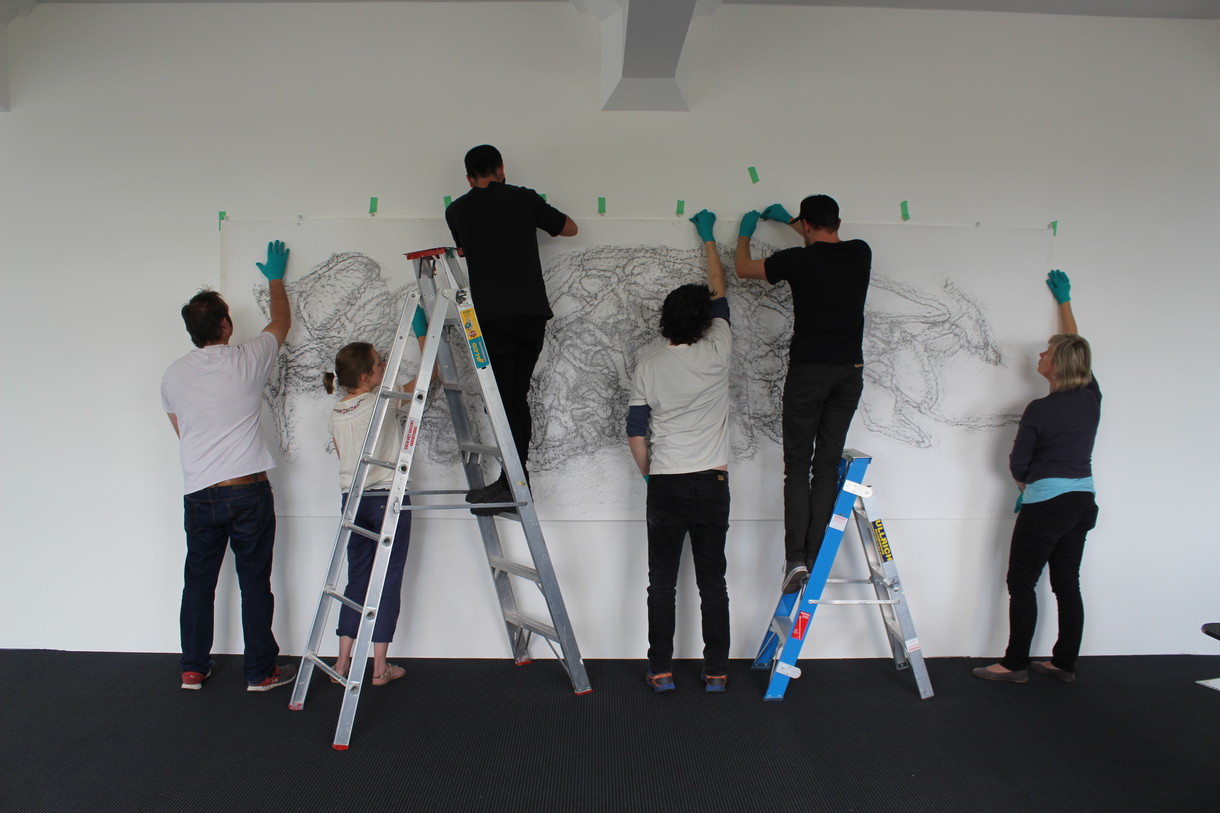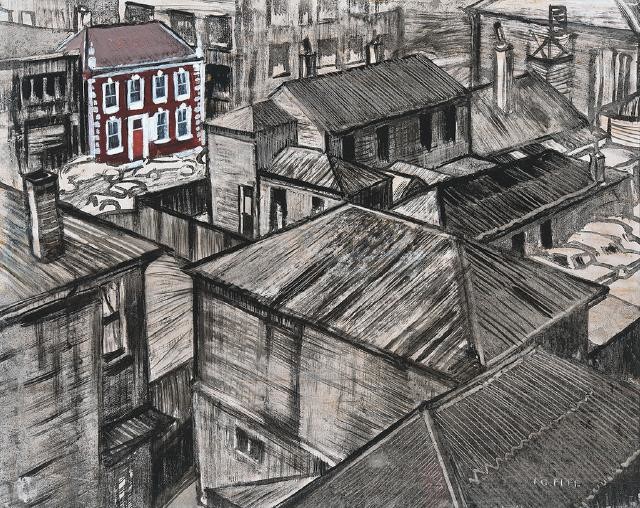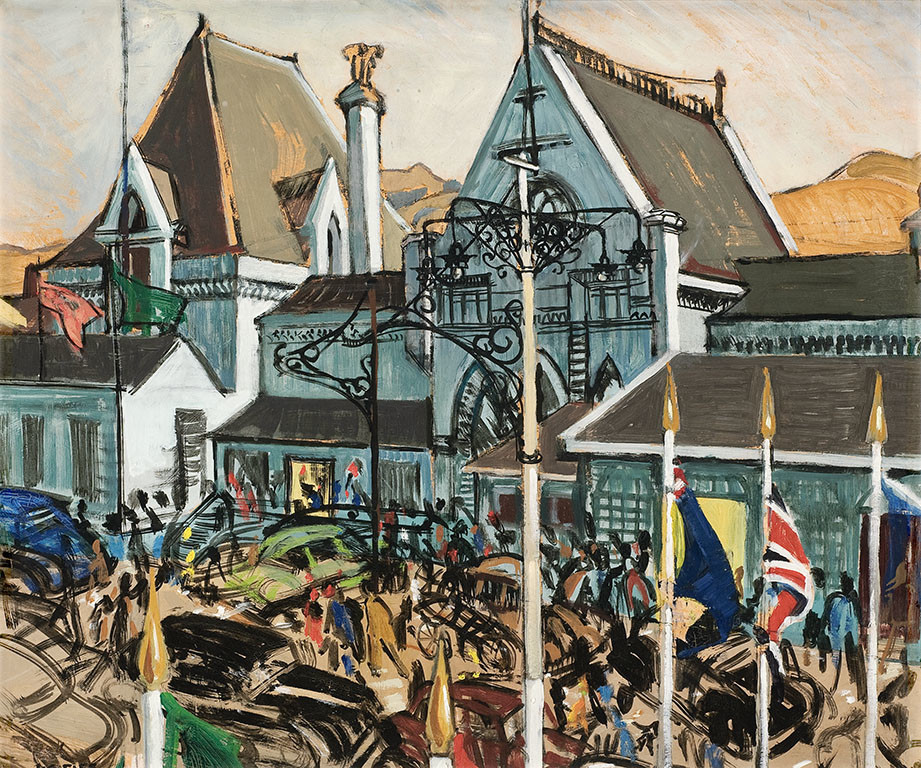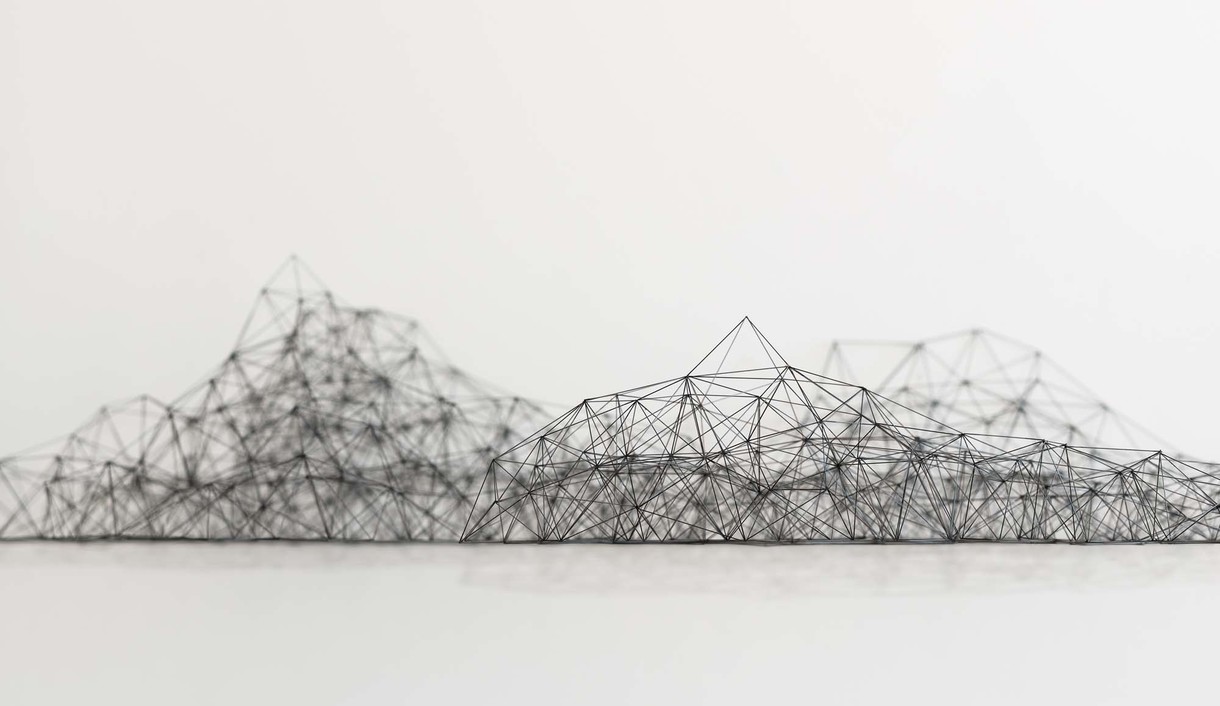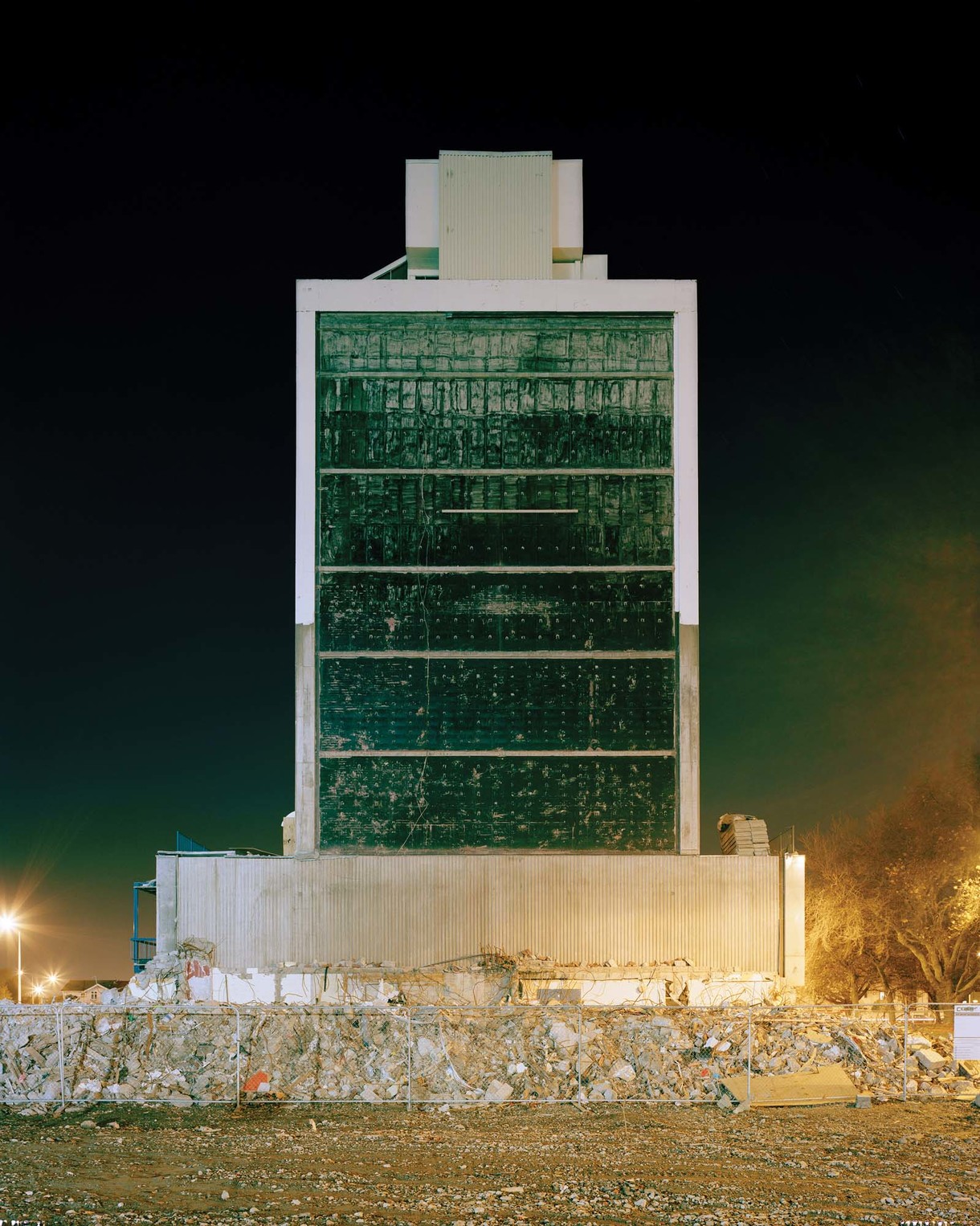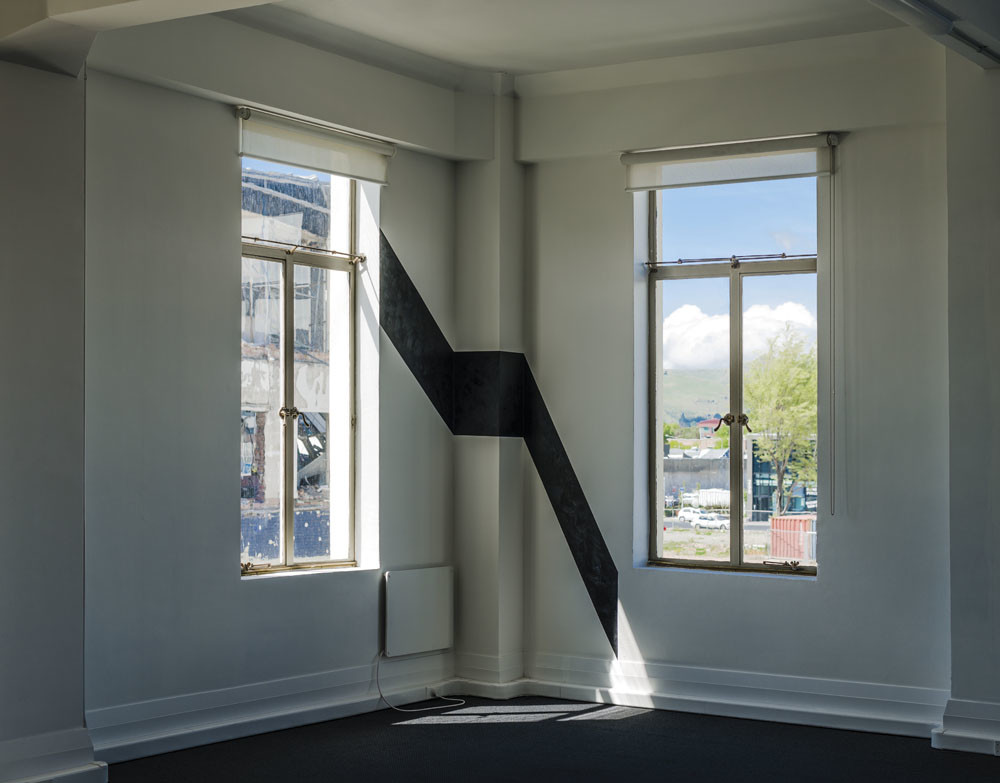L S Lowry
British, b.1887, d.1976
Factory At Widnes
- 1956
- Oil on canvas
- Purchased 1957
- 805 x 695mm
- 69/353
Tags: buildings (structures), chimneys (architectural elements), factories (structures), hats, people (agents), towers (single built works), urban landscapes, utility poles, walking sticks, workers
L. S. Lowry’s best-known paintings present rhythmic crowds of ‘matchstick figures’ spilling across tightly constructed northern English industrial and urban landscapes. The sparser setting of Factory at Widnes presents one of Britain’s grimmest environments, a birthplace of the chemical industry. Some have interpreted the trio of strolling bowler-hatted figures as factory managers, others as perhaps visiting comics – Charlie Chaplin and transatlantic duo Stan Laurel and Oliver Hardy were still in the public eye when this was painted, and two of the three had performed in Widnes. Lowry had developed his own uniquely comical outlook over forty-two years while treading the streets of Manchester as a rent collector with the same company, from which he retired on full pension in 1952. This part of his story was long kept hidden from an admiring public.
(Leaving for Work 2 October 2021 - 1 May 2022)
Exhibition History
One of England’s most-loved painters, Laurence Lowry’s depictions of grimy, overpopulated urban and industrial environments were representations of the Lancashire region where he lived. His vision of industrial England saw his canvases filled with factories, tenements, steeples, smokestacks and, typically, rhythmic, spilling crowds. Factory at Widnes is one of Lowry’s least-populated industrial landscapes, and one of his tightest, most minimal compositions; an unexpectedly deserted space within his brimming tribute to the industrial north.
(New Dawn Fades, November 2018)
Above ground, 18 December 2015-12 February 2017
L. S. Lowry’s vision of manufacturing England saw his canvases filled with factories, tenements, steeples and smokestacks, and typically rhythmic, spilling crowds. Factory at Widnes is one of Lowry’s least populated industrial landscapes, and one of his tightest, most minimal constructions; an unexpectedly deserted space within his brimming tribute to the waning industrial north.
Factory at Widnes was seen in London in 1956 by the prominent Christchurch architect and arts supporter Heathcote Helmore, who arranged for it to be shown at the 1957 Canterbury Society of Arts exhibition, from where it was purchased. Lowry was at that time Britain’s most famous living artist.
All his working life L.S. Lowry was a clerk and rent collector for a Manchester property company, painting only out of work time. As he went on his rounds he would make sketches and then use these scenes in the composite landscapes of industrial Lancashire that he referred to as ‘dreamscapes’. Lowry’s is a highly individual style with his always simplified figures instantly recognisable as particular types of people. His method of painting was also highly personalised. He would cover the canvas with many layers of flake white which he left, often for years, to mature and discolour. He would also keep his paintings, sometimes for years, until they had darkened to the right shade.
Lowry was born in Manchester and studied art part-time at evening classes. He began exhibiting in 1930 and in the late 1930s his reputation began to grow. In 1970 he was offered a knighthood, which he refused, and in 1975 he was made an Honorary Doctor of Letters by the University of Salford and Liverpool. (Label date unknown)
Lowry took his inspiration from the stark industrial landscape of Lancashire where he lived and worked all his life. Working from memory in his home studio Lowry's paintings are usually heavily populated with small figures. This one is rather different and evidentally arose from a scene Lowry saw in Widnes, near Liverpool. The three workers, marked as managerial staff by their suits and bowler hats, are completely overwhelmed by the industrial site they are approaching. Lowry's canvases were prepared in an unusual way with the canvas being covered with a ground of many layers of flake white paint, which was then left to mature for several years, before being painted.
This painting was one of two that Lowry sent out in 1956 as an invited exhibitor at the Canterbury Society of Arts annual autumn, exhibition and was subsequently acquired for this Gallery’s collection. (Label date unknown)

